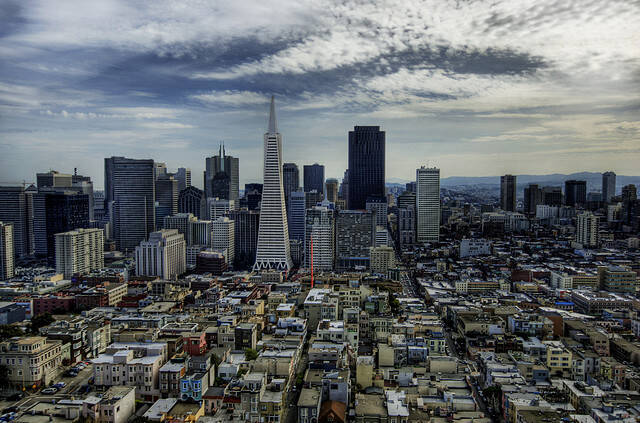This week the Brookings Institution got a lot of data-wonk press for “Some Cities Are Still More Unequal Than Others,” an update of its research on income inequality in the 50 largest American cities. The headline is that inequality widened in 2013, especially in cities with buzz-worthy downtowns, as measured by the “95/20 ratio,” or the comparison between the richest 5 percent and poorest 20 percent of households.
The Washington Post’s Mark Berman addresses his wealthy readers: “Raise a glass of something very pricey for your people in Seattle, Cleveland, Louisville and Portland, because incomes were up for the people who live there and were already pretty rich.”
As for the city that has become most notorious for its gentrification (think of those buses for Google workers), Berman reports that it takes an annual income of $423,000 to make it into the richest 5 percent of households in San Francisco, “which is a crazy amount of money.” (It would take an income of $24,815 to rise above the bottom fifth of households.)
According to Brookings, the “most unequal” cities in 2103 were Atlanta, San Francisco, Boston, Miami and Washington, D.C., while the income gap was smallest in Virginia Beach; Colorado Springs; Mesa, Arizona; Oklahoma City; and Arlington, Texas. (See table below.) The rankings suggest that older coastal cities are dystopias where the privileged few look away from squalor, while fast-growing Sun Belt cities better represent the egalitarian values of America.
But scroll down the report and you’ll find this explanation: “The cities with the most equal distribution of incomes…all are geographically large cities that incorporate large swaths of suburban territory within their borders, and most are in the South and West. In addition, these cities are not home to the concentrations of technology and financial/professional services industries that pay the very highest salaries and that characterize many of the cities at the top of the inequality rankings.”
The geographic size of the city is no small matter here. San Francisco, Boston and Miami are the only cities in the study that cover less than 50 square miles, and they account for three of the four “most unequal” cities. After you account for the inevitable presence of super-rich neighborhoods (with penthouse views and proximity to nightlife) and low-income households (in the oldest and most crowded housing stock, near places like train yards and highways), they simply have no room for many middle-class neighborhoods. The biggest city in the study is Jacksonville, at 747 square miles. It ranks 40th in inequality, but at that size, it couldn’t squeeze out middle-class families even if it tried to.
According to the Brookings study, San Francisco ranks second in inequality, but San Jose—just 50 miles away and part of the same Silicon Valley economy—is 25th. Is San Jose less elitist or more welcoming toward middle-class households, or is the difference that it covers more than three times as much land area (177 square miles) as San Francisco?
It’s fun to rank cities, counties and states, but the results can be distorted by political boundaries. Shaming certain cities as “unequal” does focus attention on real economic problems, but municipal governments have limited opportunities to deal with something as big as income inequality in the United States. Cities can attract wealthy residents through quality-of-life initiatives, and many have been very successful in that objective recently. This is not necessarily a terrible thing for the poor; a growing property-tax base, as well as revenue from things like meals and entertainment taxes, can help fund public transportation, health programs, immigration services, and anti-poverty initiatives.
A big problem with gentrifying cities is that working-class families can be pushed out into the suburbs, beyond the reach of city services and municipal laws such as Seattle’s minimum wage of $15 an hour. In many cases, these families must cope with high commuting costs and housing that, if not as expensive as that in gentrified central cities, is still unaffordable (sometimes because of minimum-size requirements and other anti-density laws in the suburbs). It’s tempting to blame glitzy neighborhoods in trendy cities for economic hardship, but we need regional, state and national responses to the precariousness of the American middle class.
"San Francisco Flyby" photo by Trey Radcliff. Creative Commons license.









